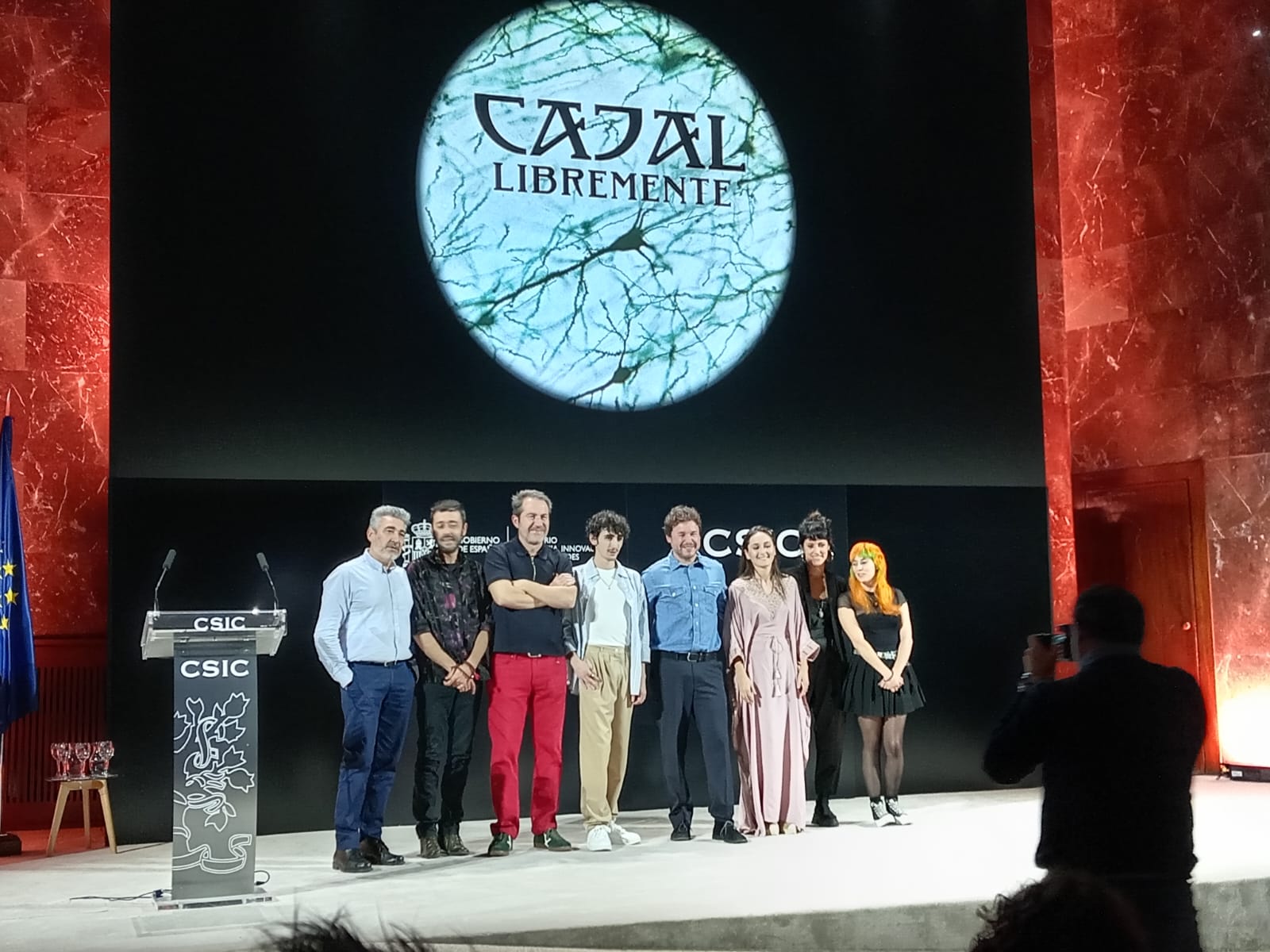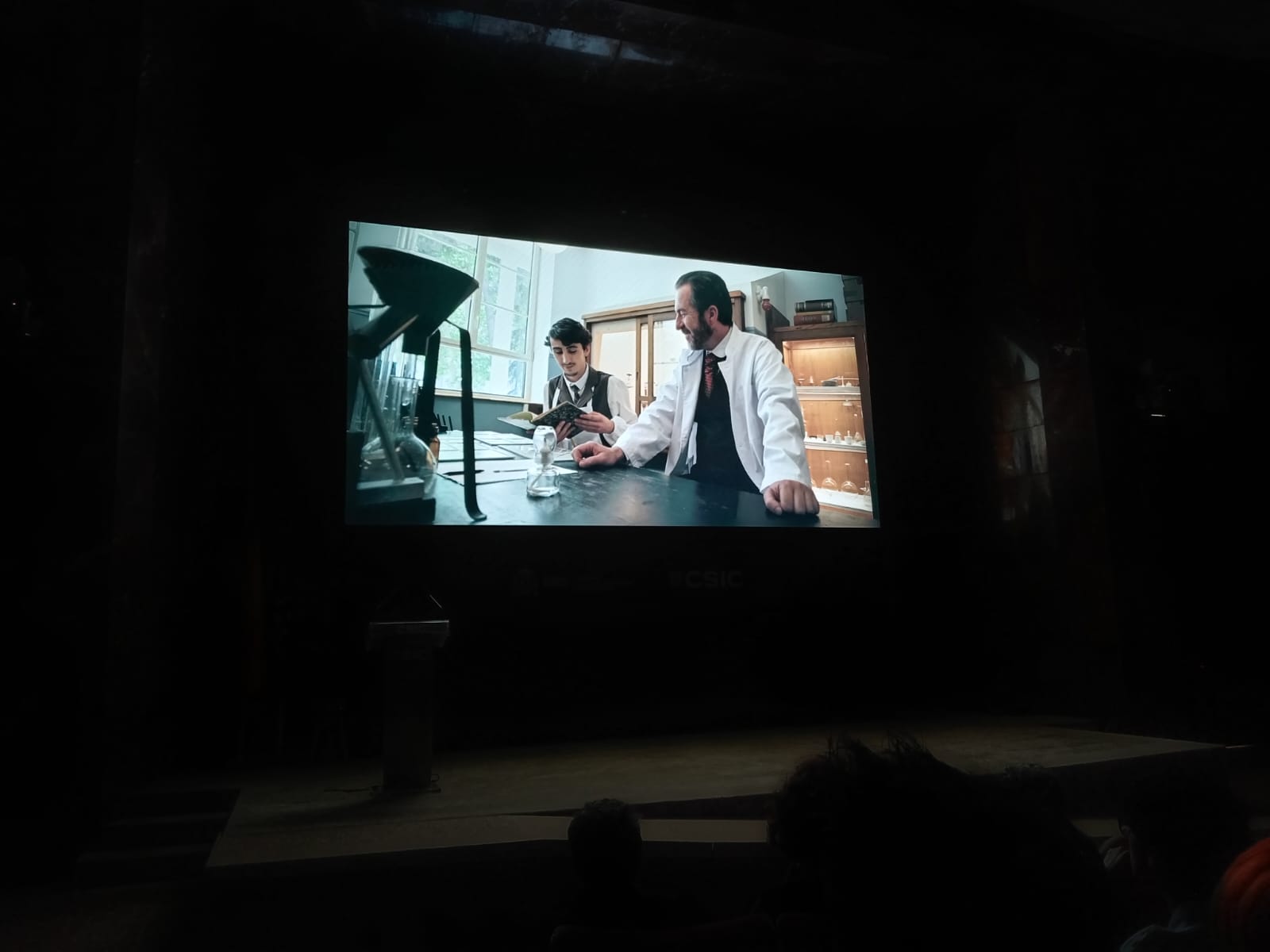Premiere of the short film ‘Cajal libremente’ (‘Cajal freely’), from José Luis Trejo and Sergio Lara.
Cajal Institute – News

Yesterday, October the 25th in 2024, at 19h, in the auditory of the central site of CSIC, it was displayed the premiere of the short film ‘Cajal libremente’ (Cajal freely), a production which was directed and scripted by José Luis Trejo and Sergio Lara, who, besides their proffesional activities (Dr, José Luis Trejo is CSIC scientific researcher in Cajal Institute), they also work as film directors.
The 28-minutes long short movie is based on a free interpretation of diffferent Ramón y Cajal texts (either assays and fiction tales), specially of his “Holidays tales”, originally published in 1906. In the film, co-produced by Aurora company and CSIC (through its Assistant Vicepresidency of Scientific Culture and Citizen Science), the actors Gustavo Gonzalo, Jorge Albuín, Andrés Barahona, Eva Racionero, Laura Jabalón and Antonio Alcaide interpreted the different roles. Adri Balanegra worked in Production and Custome Design, while Minsnya leaded Makeup and Hairstyling.
The short movie was shot in a group of locations in CSIC, including central campus in Serrano street (where it was located the mythical Students Residency), Miguel Catalán Physics Institute, and Blas Cabrera Chemical Physics Institute, which has provided its facilities in the Historical lab-museum ‘Enrique Moles’ for the film.
Furthermore, Cajal Institute (heir of scientific tradition from Ramón y Cajal) has actively participated in the film, not only throught the central work of Dr. José Luis Trejo; in addition, Dr. Juan De Carlos, expert in Cajal biography, and responsible for many years of Cajal Legacy (now in National Natural Sciences Museum) has acted as scientific and historical assistant for the movie.
The event was introduced by Pura Fernández (Assistant Vicepresident of Scientific Culture and Citizen Science), who outlined Ramón y Cajal figure and the surprising attitudes (specially, for its time) behind his stories, located in a middle pathway between real science and science fiction, so inspired by referents as Jules Verne.
After short movie emission, there was a questions-and-answers space with authors and production staff which later continued, in an informal way, in a private establishment.
As a summary of the story, Cajal and his pupil are working in the lab, but, in a certain moment, conversation drives to a debate about science, art, elections in life, and the power of fiction, which describes vital moments that we have all suffered, and Cajal example can helps us to solve.
The production starts now a period in which it will be displayed in a number of film festivals; later, it will be distributed to general publich through different mechanisms.

